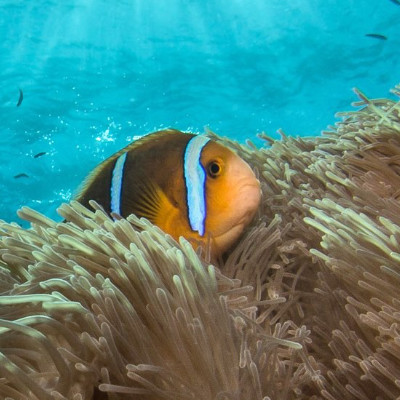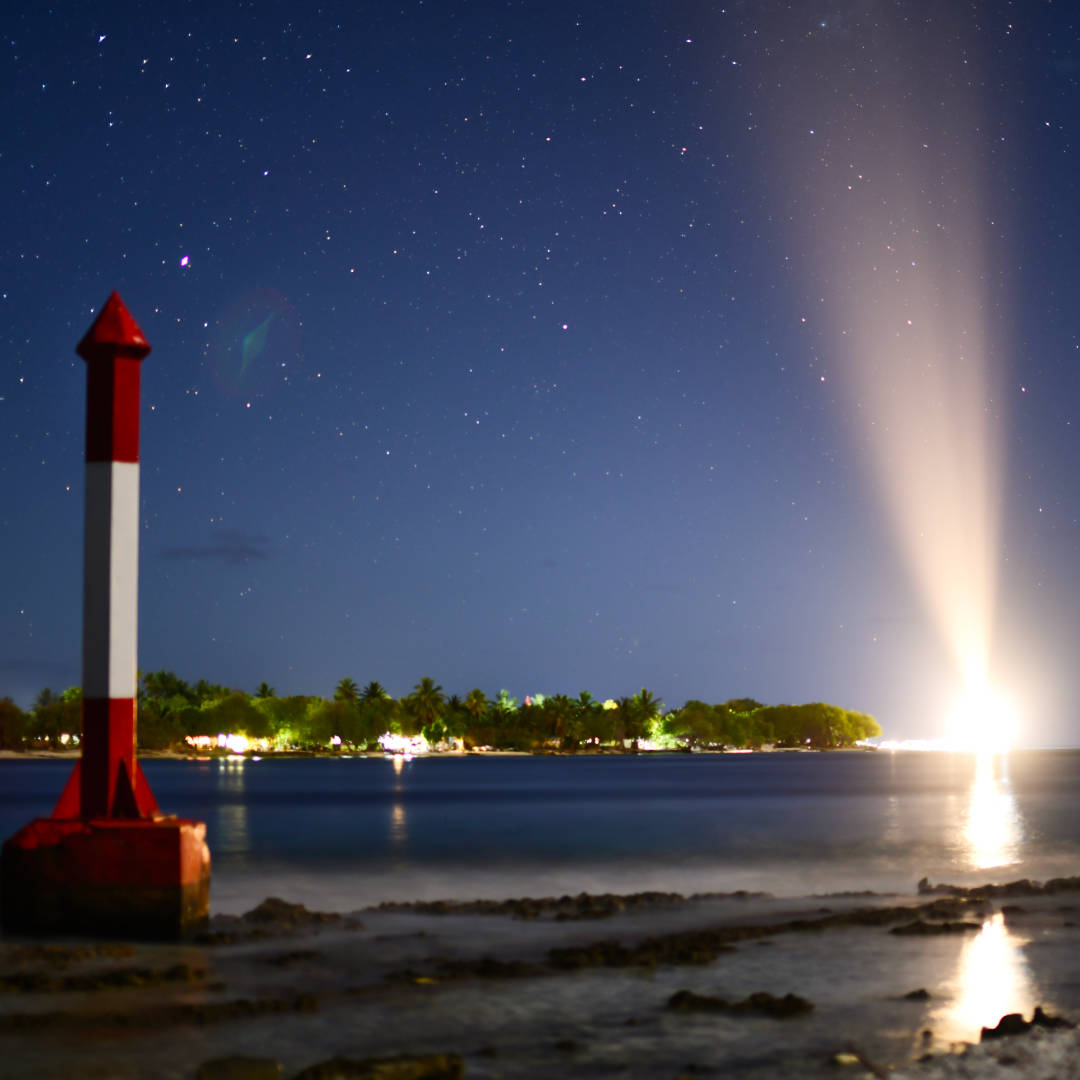written by Doris Ramseyer for the 2025 edition

Rangiroa Aquarium: an exceptional place to protect


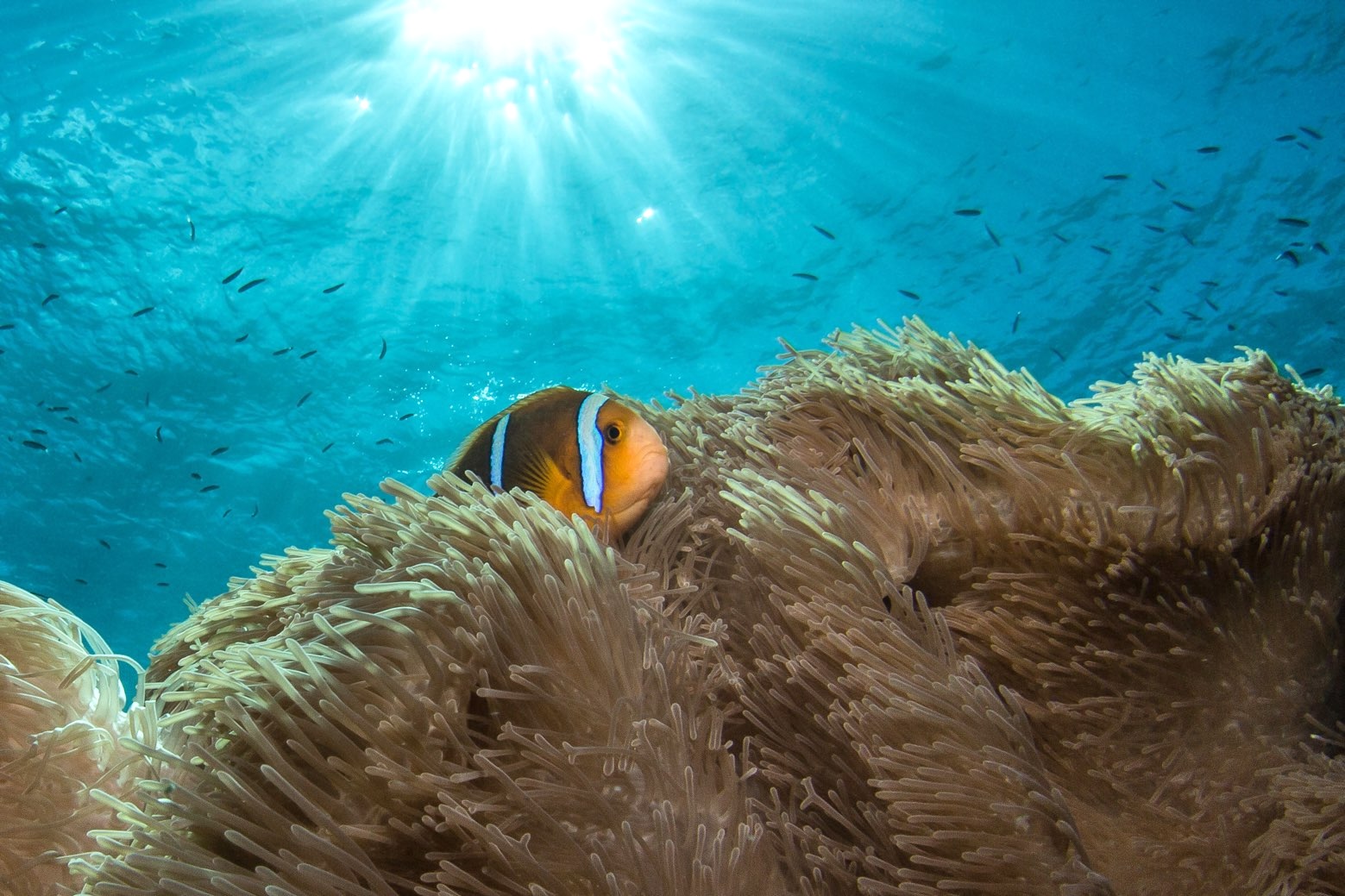
A true life-size aquarium where hundreds of reef and offshore fish live. Rich waters where magnificent corals live. The Aquarium, bathed by the incoming currents of the Tiputa Pass, protected from the swell thanks to the natural protection of the Nohi Nohi motu, is ideally located: "it's a perfect site for introductory dives and snorkeling," says Laurent Dureau, an experienced diver from around the world and Polynesia, where he anchored seven years ago.
Roaring engines. Frantic aquatic agitation, generated by vigorous water movements. Anchors are dropped into the water without regard for the corals, due to a lack of available buoys. Strikes from fins scrape the coral reefs. In this overcrowded area, only 30% of the coral remains alive. The fauna and flora are suffering, silently calling for help to survive these multiple daily attacks.

To protect the Aquarium, Laurent Dureau became the spokesperson for divers on the Rangiroa Maritime Area Management Committee. The diver trained in France, has been teaching for 25 years, helped set up four facilities in Mayotte, the Maldives, Croatia, and the Atlantic, and explored numerous sites around the world before settling on Polynesia, and Rangiroa in particular, where he works as a certified diver in various diving centers.
Laurent explains that tourism began in Tiputa around the 1960s, with the first seaplane excursions organized by Club Med. In 1965, a runway opened on the atoll, and tourism really took off. Visitors then explored Motu Nohi Nohi and the Aquarium on a glass-bottom boat. Starting in 1985, the site hosted introductory diving sessions with the Raie Manta Club, and moorings were installed to preserve the madrepores. Gradually, this exceptional site in French Polynesia became increasingly popular, and the post-COVID era saw tourism professionals triple their activity in an area of just 10,000 m²! Today, the comings and goings of service providers create risky situations, particularly when boat propellers brush against divers.
The Aquarium attracts many stakeholders. This is why the management committee, created three years ago, brings together representatives from various sectors of the municipality: diving, environmental organizations, excursionists and lagoon activities, fishing, aquaculture, pearl farms, and the Rangiroa Tourism Committee and its population.
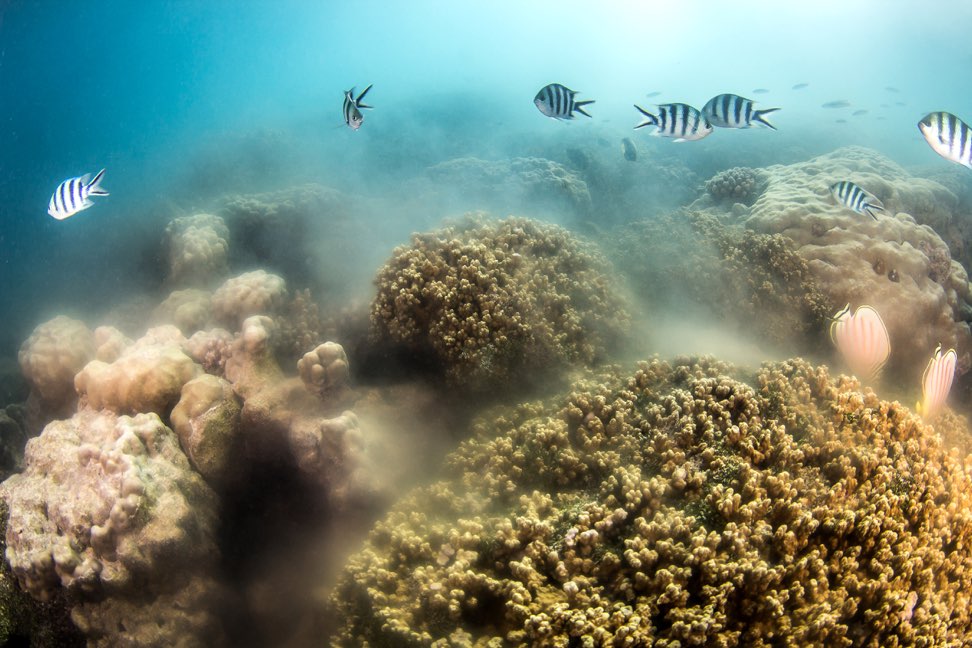
The Aquarium is the first site on the atoll to be considered starting in 2022. Ten years earlier, tacit agreements aimed at preserving the area had already been put in place, but without resulting in a Maritime Spatial Management Plan (PGEM). These measures are now insufficient. The situation is urgent. A first series of actions are carried out in 2024: the area is cleaned and redeveloped, the moorings and old buoys are removed, and new moorings are installed to create a line of buoys strictly prohibited to navigation, intended only for divers and snorkelers.
A diagnosis should soon be carried out on the area in order to list the different species of fish, to count the number of boats and visitors, the types of service providers, the economic benefits, the number of families who live from it, etc. "So many parameters that will allow us to find the right compromises, the right decisions, where environmental plans will have priority over economic activities, because the resource is essential" notes Laurent. Once a consensus has been reached, it will be submitted to the Country, the Council of Ministers and the municipality in order to regulate the space.
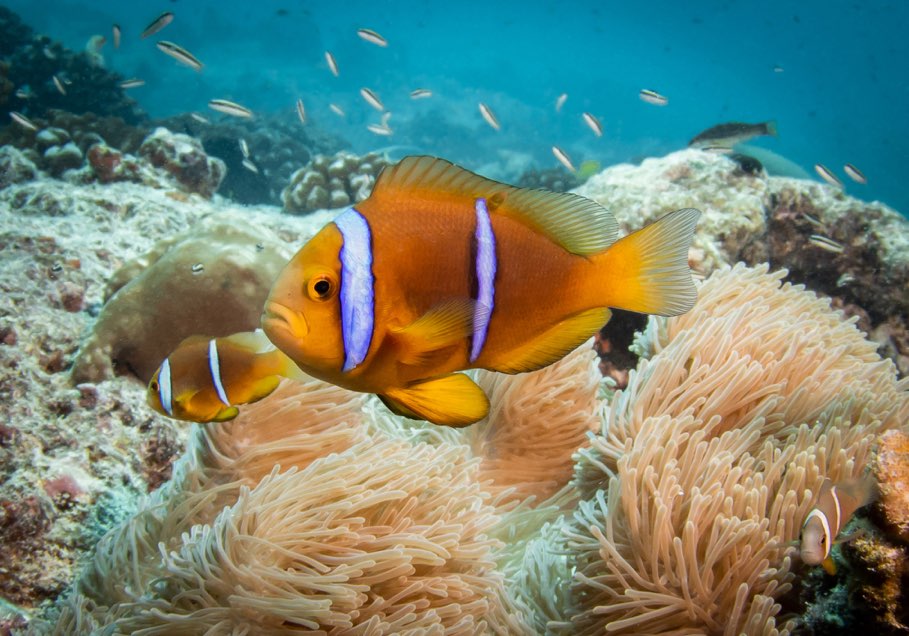
These measures will allow the lagoon to breathe and regenerate, ensuring its longevity. Coral is capable of extraordinary resilience... if given time! On a daily basis, outside of human activity, the lagoon is already subject to climatic and environmental challenges: attacks by taramea (coral-eating starfish), rising water temperatures, ocean acidification, and increasing storms—even though Rangiroa is more immune.
According to Laurent, this magnificent site deserves a real awareness from each stakeholder in order to preserve the lagoon: "we have the means and we can do it conscientiously. It is a legacy for the future, for the younger generations." Recently, young people from Rangiroa College dived into the Aquarium. They were able to perceive the vital link that exists between corals and fish, between the sea and man, between life and the ocean, key notions of Polynesian culture.
The Aquarium is of great value. It is a nesting and breeding ground for several species (sergeant majors, canebills, triggerfish, etc.), home to the extraordinary Porites rus coral, studied by the Tama No Te Tairoto association. A site crossed by various sharks, graceful rays or turtles, sometimes by a great hammerhead shark, or even dolphins! To preserve the wonder, it is vital to preserve nature.




